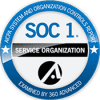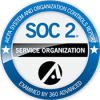The pandemic has placed additional strain on member health, creating new challenges not only around how to safely deliver care, but also what types of care are delivered. Higher levels of depression and anxiety lead to an increasing need to treat the whole person by moving beyond medical needs to also address the behavioral and social determinants that impact health. Care management programs that bring together interdisciplinary teams to collaborate on the full spectrum of patient needs can help individuals lead healthier lives and improve outcomes for even the most complex populations.
Page Content
Understanding Care Management ROI
While the return on investment (ROI) for care management programs is not always clear, payers and other risk-bearing entities can take concrete steps that can help improve their ROI and ensure a better and healthier individual experience. One important step is to evaluate the potential sources of value—the medical costs and revenue opportunities that can move the ROI needle while the member is still enrolled with the plan. This article describes three strategies that risk-bearing entities can extract more value from their care management programs.
1. Reduce medical costs
Reducing the number of preventable medical events through early detection and diagnosis is a key care management goal and cost reduction technique that is a focus of many organizations. Immediate value can be achieved by care management programs that improve care transitions and manage complex, high-risk, and rising-risk individuals more efficiently.
But, according to a recent McKinsey[i] study, other cost reduction opportunities that can make a difference in the bottom line are underutilized:
- Ensuring the appropriateness of care can help patients receive the right diagnoses, treatment, medications, and management while avoiding clinically unnecessary care.
- Engaging with patients to promote clinically appropriate site-of-care choice can reduce cost by not only choosing the most effective sites for planned procedures and for treating low- vs. high-acuity cases, but also for supporting patient discharge to home rather than skilled nursing facilities.
- Reducing the unit price of care by minimizing network leakage through in-network providers reduces costs while improving care continuity. Managing network rates and choosing high-value providers also reduce the price of care.
Care management software that integrates care management with utilization management and supports collaboration across interdisciplinary care teams can help you ensure that each individual receives the appropriate treatment at the right time and the right place. Look for a care management tool that integrates care guidelines and automates workflows to ensure care standards and consistency, and make sure it enables behavioral health treatment to support whole-person care. This combination of capabilities will help you tailor care management programs to meet the needs of even the most complex populations, right-sizing care intensity while avoiding treatment delays and clinically inappropriate spend.
2. Leverage revenue opportunities
Many care management programs focus on improving care quality and closing care gaps—not only ensuring that care is clinically appropriate, coded accurately, and managed, but providing a person-centered approach that improves satisfaction.
This focus has the added benefit of improving Medicare Stars and Consumer Assessment of Healthcare Providers and Systems (CAHPS) performance, which can help you maximize financial incentives and bonus payments.
Allocating those dollars back into benefits can offer members additional opportunities to increase coverage through “buy-ups” and to improve experience. Plus, an appealing benefits portfolio that includes care management programs can help satisfy, retain, and attract membership.
Care management tools that automate workflows, support quality improvement and compliance, and personalize member engagement and experience can improve outcomes and member satisfaction and lead to higher revenue. Make sure your tools are flexible enough to innovate and adapt to evolving requirements to support a diverse set of care management programs, continuing compliance, and new business opportunities.
3. Target the right sources of value
According to McKinsey, the most successful payers potentially see 2% to 5% savings from care management. But if care management programs are too narrowly focused or target sources of value that are achieved many years in the future, other sources of value may be missed or the value may not be realized while the member is still enrolled in the plan.
Choosing a Care Management Platform
Choose a care management platform that brings you results today, helping you strategically target high-potential cost reduction and revenue opportunities such as helping members select in-network providers that deliver the highest-quality and most efficient care, or the most clinically appropriate site of care. Make sure your care management tools enable collaboration across disciplines and report your results so that care can be efficiently and effectively managed, particularly for high-risk members. Investing in the right care management software can help you not only automate processes to support quality improvement while eliminating manual processing and costly errors, but right-size care management to member need at a point in time, ultimately boosting ROI while providing a better, healthier individual experience.
Related Information: Why Incedo?
[i] McKinsey & Company, “The untapped potential of payer care management.”








